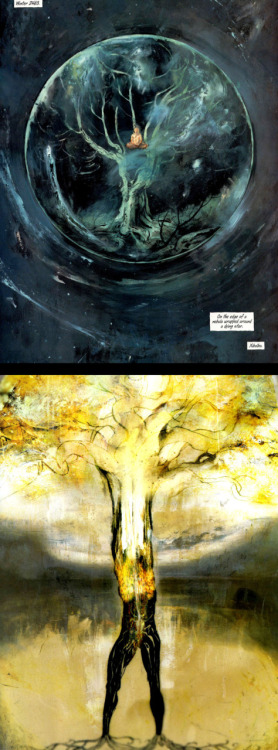






1. What is the best way to get work in illustration?
An online portfolio is a must. As for as self-promotion, I send out 4x6 postcards every 5 months or so. I'm not as diligent as I should be, though!
My school did a good job of preparing us and our student portfolios. Upon graduation, I was lucky to meet some very supportive designers who gave me some great jobs and enabled me to build up my professional portfolio. I worked at a video game company in Edmonton, Alberta, doing texturing and character work, while freelancing during (all of) my free time. Basically, I worked my day job until I had built up enough clients to allow me to freelance fulltime, which I started doing in early 2005.
I don't have a rep. I considered getting one, but ultimately decided that I was doing alright so far without one: I don't mind doing the promotion and I like not having to giving a cut to anyone. I think certain people can very much benefit from having a rep, though. It really depends on your personality and goals. I think reps can reach certain segments of the industry that would be hard to crack otherwise. Publishing or advertising, for example.
2. Do you have a favorite art book/magazine/blog/website?
Illustration Friday has artist interviews from myself and other professionals... they're very nuts-and-bolts industry questions, so that might be helpful... http://www.illustrationfriday.com/interviews_p.php
3. What kind of artwork do you do for yourself, and is it different from what you do for work?
I do sincerely believe that without personal work and comics, I might go nuts. For the most part, there is little Sense of Play in commercial illustration (there are a few glorious exceptions to this rule). And the Sense of Play is really what nourishes creativity and, ultimately, good work (paid or otherwise). Sometimes, I think, it’s actually more important than rigorous practice.
4. What is a typical work day like for you?
I have a studio-room in our apartment. I try to keep it orderly, but I think I need more storage and shelving. I listen to a LOT of Canadian public radio. My little grey cat, Gretel, keeps me company. People sometimes ask how I can stand working in my house, but since I've never had an outside studio, I don't know any better!
It can be tempting to work all_the_time, and feel guilty if you're not! I try to keep in mind that life provides the inspiration for creativity. A day in the museum or a walk around New York City can do wonders for one's motivation.
5. What has your favorite assignment been?
My favourite assignments are those where I am hired for what I do, and I am given a lot of freedom. The best illustrations are always the result of collaborations with art directors who aren't afraid to take risks or stray from the really literal solutions. I find that I am sometimes asked to execute already-conceived ideas, which can sometimes make you feel like "hired hands". The art director is entitled to hire you to simply "do this idea in your style", but the joy of illustration is always in the collaboration and self-expression. Usually, the final illustration itself evidences this joy and life (or lack thereof). That's been the case in my experience, at least.
6. What is the most important advice you would offer for an aspiring illustrator?
This is strange, but honest: you have to be good. Don't waste your time if you don't have the talent and/or motivation. No amount of promos, websites, mailers, new items in your portfolio will do you any good if the work is not up to snuff. I know talented people that will not succeed because they don't have the motivation, and I know motivated illustrators that don't have the talent (or are at least not producing the work).
























